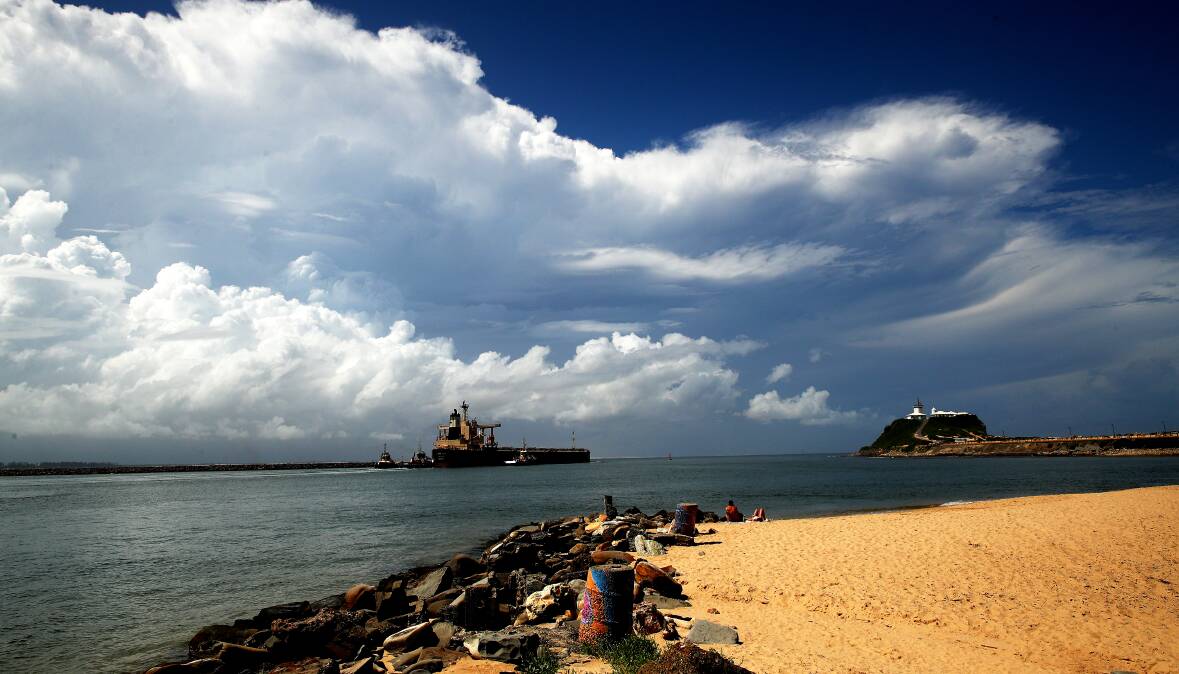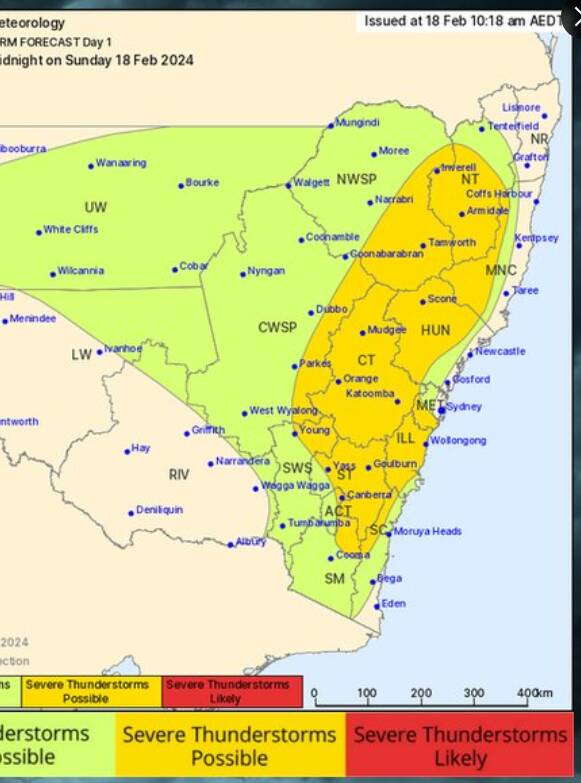
The Bureau of Meteorology (BOM) issued a severe thunderstorm warning for the Hunter on Sunday afternoon.
Heavy, intense rainfall and large hailstones could be expected potentially this afternoon and continuing overnight.
The weather change comes after a warm and dry weekend in the Hunter, and wet conditions are on the horizon heading into Monday and Tuesday.
BOM forecasts predict a trough pushing out along the coastline, which senior meteorologist Jordan Notara says will increase the possibility of showers.

"It's going to be a relatively warm day, with temperatures in the higher 20s through the Newcastle area and parts of the Lower Hunter, but we'll see that accompanied with some heavier showers in the afternoon," Mr Notara said.
Monday's top temperature is expected to be 29 degrees while Tuesday will reach 27.
Mr Notara said showers may be sporadic, coming across light in some areas with potential bursts of heavy rainfall in others.
"Maybe 10mm could be something we could see as the shelf comes across, but we're not at the stage of severe storms," he said.
He said the Bureau would monitor storm warnings "to really identify exactly where they are because it's uncertain where these storms could produce".
Conditions will ease by Wednesday with a slight chance of rain before temperatures begin to climb heading into the later part of the week, and are similar in the Upper Hunter.
The maximum temperature for Newcastle on Thursday is 32, while Friday is forecast to reach a top of 35 degrees with a chance of a thunderstorm.
The humidity is also here to stay the BOM says, as heightened moisture with slow-moving high-pressure systems continue to cause an influx of tropical air into the state.
"Humidity levels are influenced by a multitude of factors, with warmer than average sea surface temperatures (SST) standing out as a significant contributor," a BOM spokesperson said.
"Elevated SSTs lead to accelerated evaporation rates from the ocean surface, consequently increasing atmospheric moisture content.
"This rise in moisture levels contributes to heightened humidity in the surrounding atmosphere. Specifically, observed warmer than average SSTs in the Tasman Sea have played a crucial role in elevating humidity levels."
They said NSW has experienced prolonged periods of elevated humidity, driven by both the warmer SSTs and the introduction of tropical air masses associated with the sluggish high-pressure systems.







